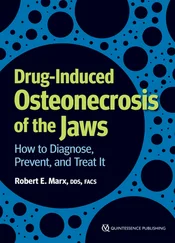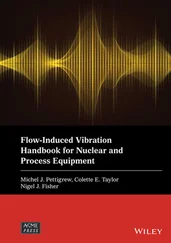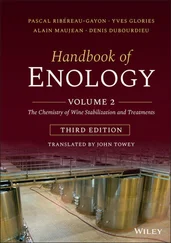Andrea NittiDepartment of Chemistry University of Pavia and INSTM Research Unit Pavia, Italy
Supattra PanthaiDepartment of Applied Chemistry College of Life Sciences Ritsumeikan University Kusatsu, Japan
Dario PasiniDepartment of Chemistry University of Pavia and INSTM Research Unit Pavia, Italy
Qian PengSchool of Chemical Sciences University of Chinese Academy of Sciences Beijing, China
Anjun QinState Key Laboratory of Luminescent Materials and Devices Guangdong Provincial Key Laboratory of Luminescence from Molecular Aggregates Center for Aggregation‐Induced Emission South China University of Technology Guangzhou, China
Kazuki SadaFaculty of Science, Hokkaido University Sapporo, Hokkaido, Japan Graduate School of Chemical Sciences and Engineering Hokkaido University Sapporo, Hokkaido, Japans
Gurpreet SinghDepartment of Chemistry UGC Sponsored Centre for Advanced Studies‐IIGuru Nanak Dev University, Amritsar PB, India Shinsuke Takagi Department of Applied Chemistry Graduate Course of Urban Environmental Sciences Tokyo Metropolitan University Minami‐Oshawa, Hachiohji, Tokyo, Japan
Ben Zhong TangState Key Laboratory of Luminescent Materials and Devices Guangdong Provincial Key Laboratory of Luminescence from Molecular Aggregates Center for Aggregation‐Induced Emission South China University of Technology Guangzhou, China Department of Chemistry, Hong Kong Branch of Chinese National Engineering Research Centre for Tissue Restoration and Reconstruction, Institute for Advanced Study, and Department of Chemical and Biological Engineering, The Hong Kong University of Science & Technology, Clear Water Bay, Kowloon, Hong Kong, China Shenzhen Institute of Aggregate Science and Technology School of Science and Engineering The Chinese University of Hong Kong Shenzhen, Guangdong, China
Osamu TsutsumiDepartment of Applied Chemistry College of Life Sciences Ritsumeikan University Kusatsu, Japan
Kang WangBeijing Key Laboratory of Energy Conversion and Storage Materials College of Chemistry Beijing Normal University Beijing, China
Qian WangBeijing Key Laboratory of Energy Conversion and Storage Materials College of Chemistry Beijing Normal University Beijing, China
Chenxu YanShanghai Key Laboratory of Functional Materials Chemistry Key Laboratory for Advanced Materials and Institute of Fine Chemicals Joint International Research Laboratory of Precision Chemistry and Molecular Engineering Feringa Nobel Prize Scientist Joint Research Center School of Chemistry and Molecular Engineering East China University of Science & Technology, Shanghai, China
Tianjia YangSchool of Chemistry and Chemical Engineering Shanghai Jiao Tong University Shanghai, China
Ying YuShenzhen Institute of Aggregate Science and Technology School of Science and Engineering The Chinese University of Hong Kong Shenzhen, Guangdong, China
Wang Zhang YuanSchool of Chemistry and Chemical Engineering Shanghai Jiao Tong University Shanghai, China
Haoke ZhangDepartment of Chemistry, The Hong Kong University of Science and Technology, Clear Water Bay, Kowloon, Hong Kong, China
Qichun ZhangDepartment of Chemistry, Department of Materials Science and Engineering, City University of Hong Kong, Hong Kong, China Zheng Zhao Shenzhen Institute of Aggregate Science and Technology School of Science and Engineering The Chinese University of Hong Kong Shenzhen, Guangdong, China
Zihao ZhaoSchool of Chemistry and Chemical Engineering Shanghai Jiao Tong University Shanghai, China
Zujin ZhaoState Key Laboratory of Luminescent Materials and Devices Guangdong Provincial Key Laboratory of Luminescence from Molecular Aggregates South China University of Technology Guangzhou, China
Xiaoyan ZhengBeijing Key Laboratory of Photoelectronic/Electrophotonic Conversion Materials Key Laboratory of Cluster Science of Ministry of Education School of Chemistry and Chemical Engineering Beijing Institute of Technology, Beijing, China
Yan‐Song ZhengKey Laboratory of Material Chemistry for Energy Conversion and Storage Ministry of Education School of Chemistry and Chemical Engineering Huazhong University of Science and Technology Wuhan, China
Tianwen ZhuSchool of Chemistry and Chemical Engineering Shanghai Jiao Tong University Shanghai, China
Wei‐Hong ZhuShanghai Key Laboratory of Functional Materials Chemistry Key Laboratory for Advanced Materials and Institute of Fine Chemicals Joint International Research Laboratory of Precision Chemistry and Molecular Engineering Feringa Nobel Prize Scientist Joint Research Center School of Chemistry and Molecular Engineering East China University of Science & Technology, Shanghai, China
Preface to Handbook of Aggregation‐Induced Emission
Aggregation‐induced emission (AIE) describes a photophysical phenomenon in which molecular aggregate exhibits stronger emission than its single‐molecule counterpart. AIE research provides an excellent platform to explore aggregate behaviours since it emphasizes the new properties endowed by molecular aggregates beyond the microscopic molecular level. The 21‐year development of AIE research has witnessed the great achievements in this area, including mechanistic understanding, structure‐property relationship, and high‐tech applications. The achievements of AIE research demonstrate that many behaviours and functions that are absent in molecular species can be founded in molecular aggregates. Since the properties of molecular ensembles are closer to those of macroscopic materials, AIE research is of both scientific value and technological importance for real applications.
Due to its great value and huge potential, AIE research is attracting more and more attention from chemistry, physics, materials science, medical and biomedical science and shows promising applications in these fields. Noteworthy, as a general platform to study aggregate science, AIE keeps integrating with other research fields involving materials, biology, medicine, energy and environment, and injects new vitality into these fields. When more researchers are working on this field, more breakthroughs in both fundamental research and application are envisioned in the future.
This handbook is an essential reading for scientists and engineers who are designing optoelectronic materials and chemical/biomedical sensors. It is also a valuable reference book to academic researchers in materials science, physical and synthetic organic chemistry as well as physicists and biological chemists.
Preface to Volume 1: Fundamentals
Volume 1 surveys the breakthrough of aggregation‐induced emission (AIE) research area, focusing mainly on the fundamentals of various branched areas. In particularly, this volume presents the new properties that molecular ensembles bring to molecules and highlight the role of molecular aggregates in endowing or improving the performance of organic materials. The branches of AIE include crystallization‐induced emission (CIE), room temperature phosphorescence (RTP), aggregation‐induced delayed fluorescence (AIDF), anti‐Kasha transition (AKT), clusterization‐triggered emission (CTE), through space interaction (TSI), mechanoluminescence (ML), circularly polarized and others. We specifically focus on the new properties of materials endowed by molecular aggregates beyond the microscopic molecular level. We hope this volume will inspire more research into molecular ensembles at/beyond meso level and lead to the significant progresses in material science, biological science, etc.
Читать дальше












